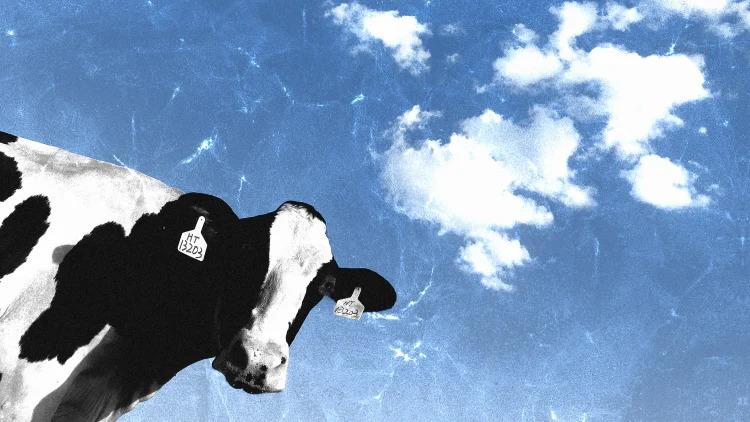A Climate Solution Is Here, and It Has Four Stomachs
Dairy and meat don’t have to induce guilt—or climate change—as farming is about to change.

By Jeff Simmons
Originally published by Fast Company
From the world’s largest food companies to consumers, we are focused on finding ways to reduce our impact on climate change. For some, the solution has been to give up a staple on tables across the country—the burger.
But I’m here to let you in on a secret. You can have your burger without the side of guilt. That’s because the cow’s environmental footprint just changed.
Some of the world’s largest food companies have set significant climate commitment goals, yet the path to achieve this is one of the industry’s biggest challenges. That’s because it’s difficult to capture the reduction value of Scope 3 emissions—indirect emissions that occur in the value chain. These food companies must not only consider their role in getting the glass of milk on your table, but the footprint of the cow too.
A response to methane
It’s clear we all want a choice in what we eat. Demand for animal-based protein isn’t declining— it’s growing. The Food and Agriculture Organization of the United Nations recognized both the need for more animal protein production to address global hunger, while also reducing emissions. In livestock, they’ve identified nine measures to reduce methane emissions 25% by 2030, and to increase livestock productivity 1.7% per year globally by 2050. Cattle are a key part of the answer to addressing some of the world’s biggest societal issues: hunger and climate. The cow is no longer the culprit—the cow is the how.
The biggest opportunity to make a difference in emissions is inside the animal—enteric methane. Methane is shorter lived than carbon dioxide (CO2), lasting about a decade in the atmosphere, but is 27 times more potent at trapping heat. With methane, smaller reductions can create a bigger impact. But you can’t have environmental sustainability without also creating economic sustainability, meaning sustainable practices must also be profitable on the farm to create widespread adoption.
The U.S. Food and Drug Administration (FDA) recently completed its comprehensive, multi-year review safety and efficacy review of our product, Bovaer® (3-NOP), a first-in-class methane-reducing feed ingredient, for use in lactating dairy cattle. The product suppresses the methane-inducing enzyme in the cow’s rumen. By giving one tablespoon of Bovaer to each lactating dairy daily, we can lower methane emissions by around 30%, equal to 1.2 metric tons of carbon dioxide equivalent (CO2e) emissions each year. These reductions create a new opportunity for dairy farmers to be financially rewarded for reducing their dairy’s carbon footprint. Feeding one million cows Bovaer would reduce emissions by the equivalent of removing more than 285,000 cars from the road for a year.
Other climate tools
Climate neutral farming keeps U.S. farmers globally competitive so that they can continue to produce more food with a lower, and ultimately balanced environmental footprint. Access to this technology now gives farmers another tool to implement. It starts with innovations in feed, like Bovaer, and other on-farm solutions, implementing tools like our tool UpLook, an insights-based engine designed to measure and monitor greenhouse gas emissions, and Athian’s first-of-its-kind voluntary livestock carbon insetting marketplace to create the necessary ecosystem to help farmers reduce, measure, and monetize their emission reductions, delivering value through the entire food chain.
Climate neutral livestock farms are the future, and will happen this decade. Making the U.S. farmer more profitable and competitive, helping food companies achieve their Scope 3 emissions goals, and giving consumers what they also want—more environmentally conscious animal protein options—environmentally friendly dairy choices from milk and yogurt to cheese, ice cream, and more.
Jeff Simmons is president and CEO of Elanco Animal Health.
Apply to the Most Innovative Companies Awards and be recognized as an organization driving the world forward through innovation. Extended deadline: October 11.
Continue reading here

